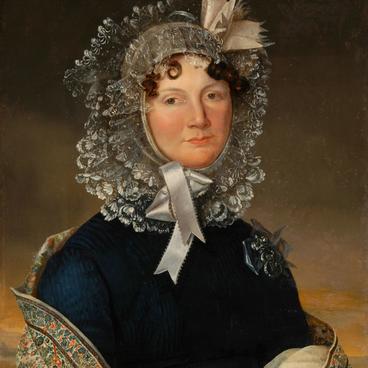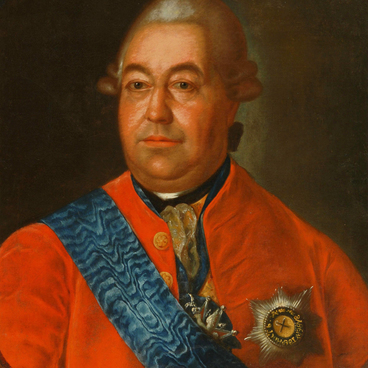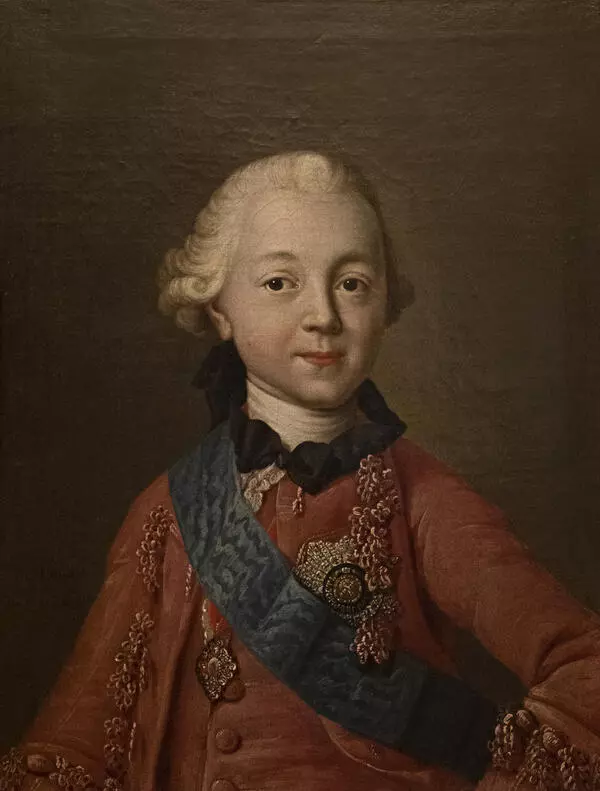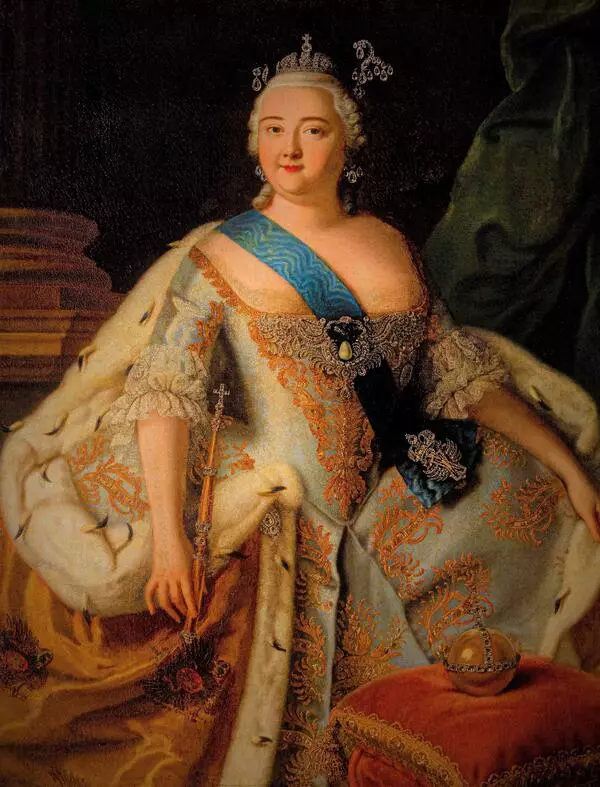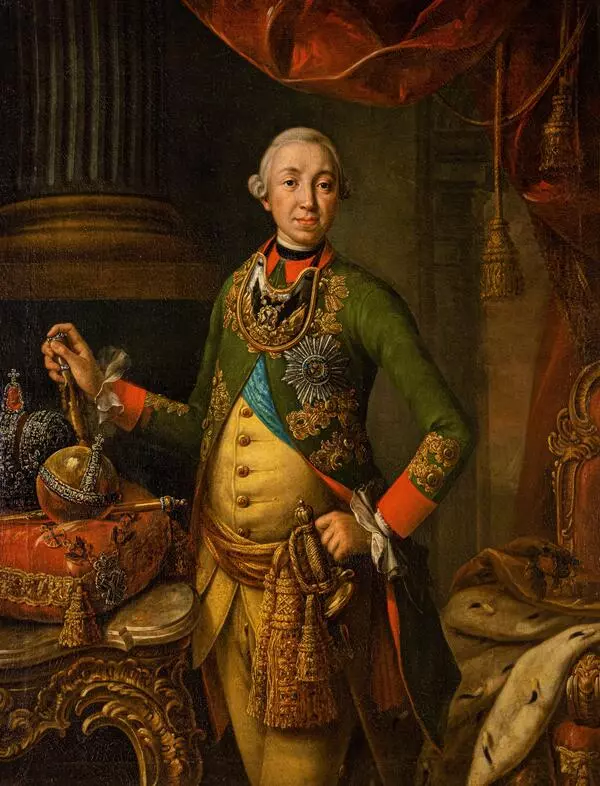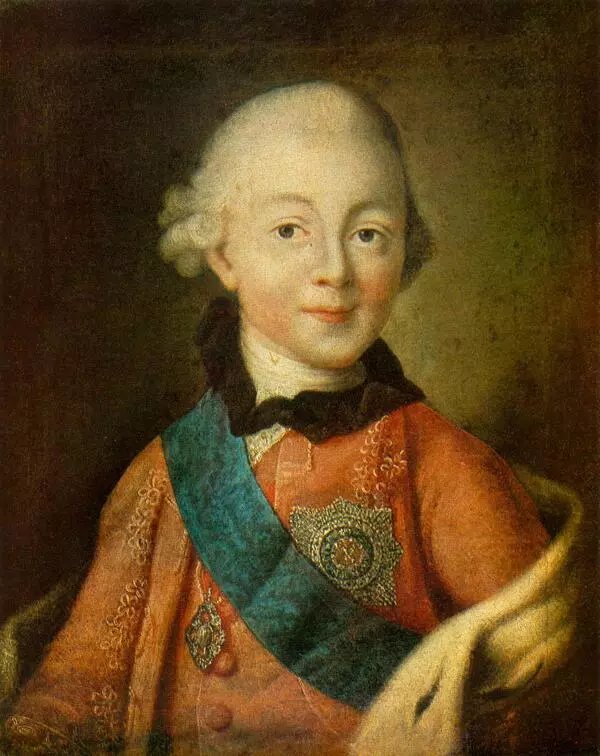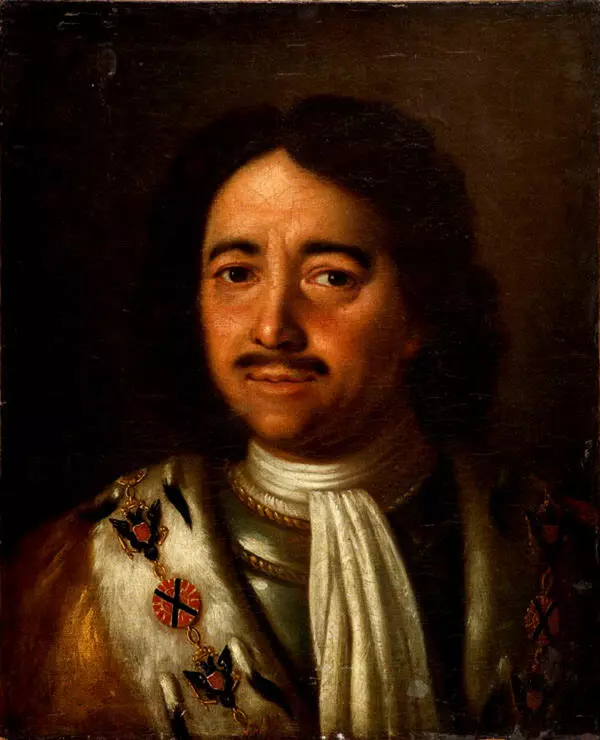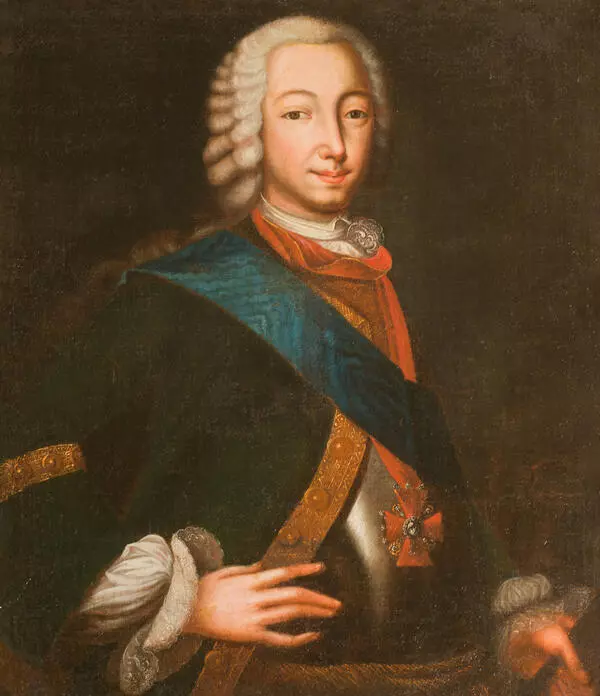Researchers believe that the author of the painting was the famous court painter Alexei Antropov, although the painting does not bear his signature. He portrayed the rosy-cheeked countess Elizaveta Vorontsova in an elaborate dress made according to the fashion of the time, holding a red flower in her hand that emphasized the whiteness of her skin. Although contemporaries described her as ‘fat and clumsy’, ‘big-boned’ and simply ‘not pretty’ and ‘inappropriate’ woman, the artist managed to portray the intricate simplicity of Elizaveta Romanovna that at one time attracted a very famous person.
Elizaveta Vorontsova lost her mother at an early age and happened to be accepted at the Imperial court where she became a lady-in-waiting for Ekaterina Alexeyevna. At the time Vorontsova attracted the attention of the future emperor Petr Fedorovich who started showing special affection for her. When he ascended to the throne in 1762, he promoted the young lady to chamber lady-in-waiting and granted her the order of the Great Martyr Saint Catherine.
Romanovna, as she was called at court behaved very confidently, practically as through she owned the place, and was not even shy of making scenes to her lover. During one of the quarrels she cried out in a fit of anger that Petr ‘did not deserve to be the Russian Emperor’. He was so angry that he wanted to send into exile the whole Vorontsov family but the conflict was hushed up.
Petr III was planning to send Ekaterina Alexeyevna to a monastery and marry Vorontsova. However, Ekaterina outwitted her husband and managed to seize the throne as a result of the coup d’etat.
She sent her husband into exile to a village near Moscow. Petr asked only two things of the Empress: to grant him a good allowance and let Vorontsova live near him. Ekaterina understood that Romanovna did not pose any threat to her anymore and spared her life. After the death of Petr III the Empress ordered Vorontsova to live quietly, not to attract attention or give reason to discuss her at the court.
That is how Countess Vorontsova spent the rest of her life, having married state counsellor Alexander Polyansky. The lady-in-waiting died in 1792.
Elizaveta Vorontsova lost her mother at an early age and happened to be accepted at the Imperial court where she became a lady-in-waiting for Ekaterina Alexeyevna. At the time Vorontsova attracted the attention of the future emperor Petr Fedorovich who started showing special affection for her. When he ascended to the throne in 1762, he promoted the young lady to chamber lady-in-waiting and granted her the order of the Great Martyr Saint Catherine.
Romanovna, as she was called at court behaved very confidently, practically as through she owned the place, and was not even shy of making scenes to her lover. During one of the quarrels she cried out in a fit of anger that Petr ‘did not deserve to be the Russian Emperor’. He was so angry that he wanted to send into exile the whole Vorontsov family but the conflict was hushed up.
Petr III was planning to send Ekaterina Alexeyevna to a monastery and marry Vorontsova. However, Ekaterina outwitted her husband and managed to seize the throne as a result of the coup d’etat.
She sent her husband into exile to a village near Moscow. Petr asked only two things of the Empress: to grant him a good allowance and let Vorontsova live near him. Ekaterina understood that Romanovna did not pose any threat to her anymore and spared her life. After the death of Petr III the Empress ordered Vorontsova to live quietly, not to attract attention or give reason to discuss her at the court.
That is how Countess Vorontsova spent the rest of her life, having married state counsellor Alexander Polyansky. The lady-in-waiting died in 1792.
